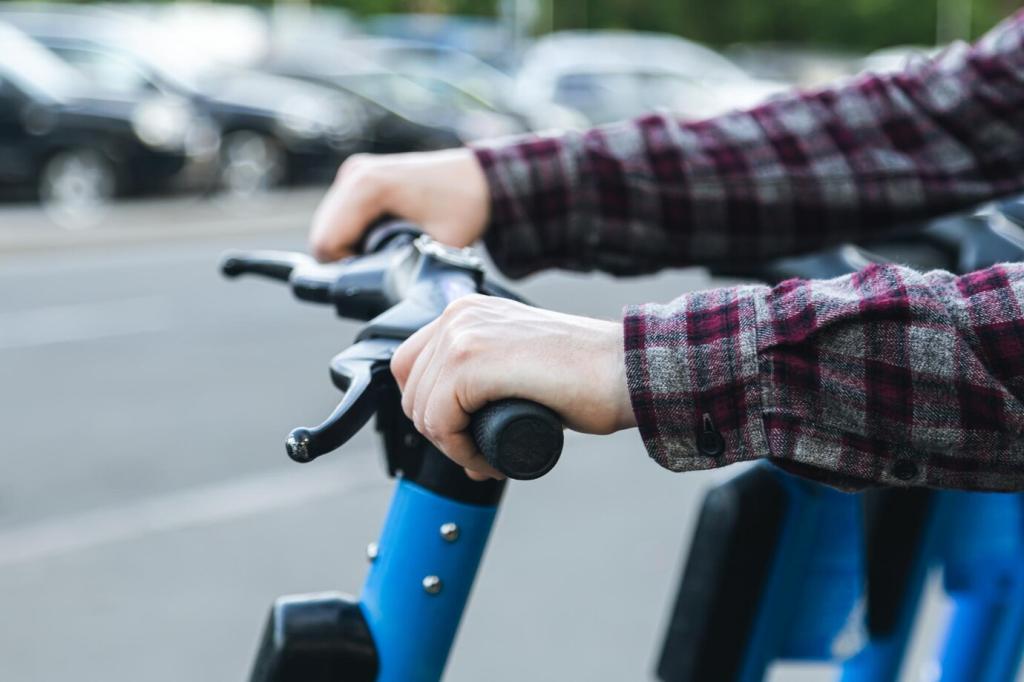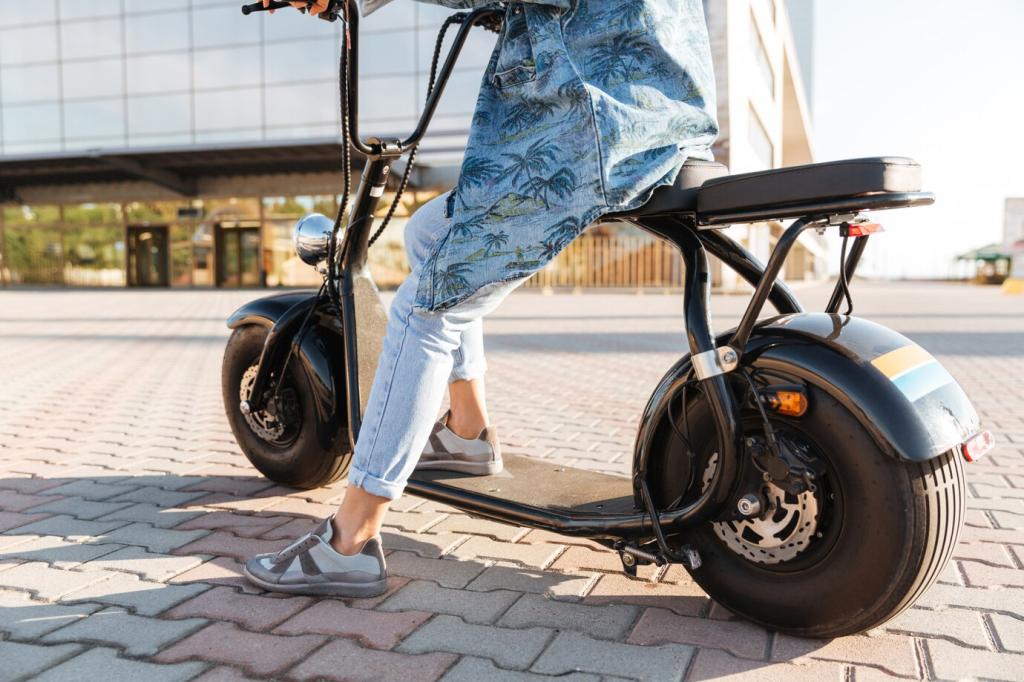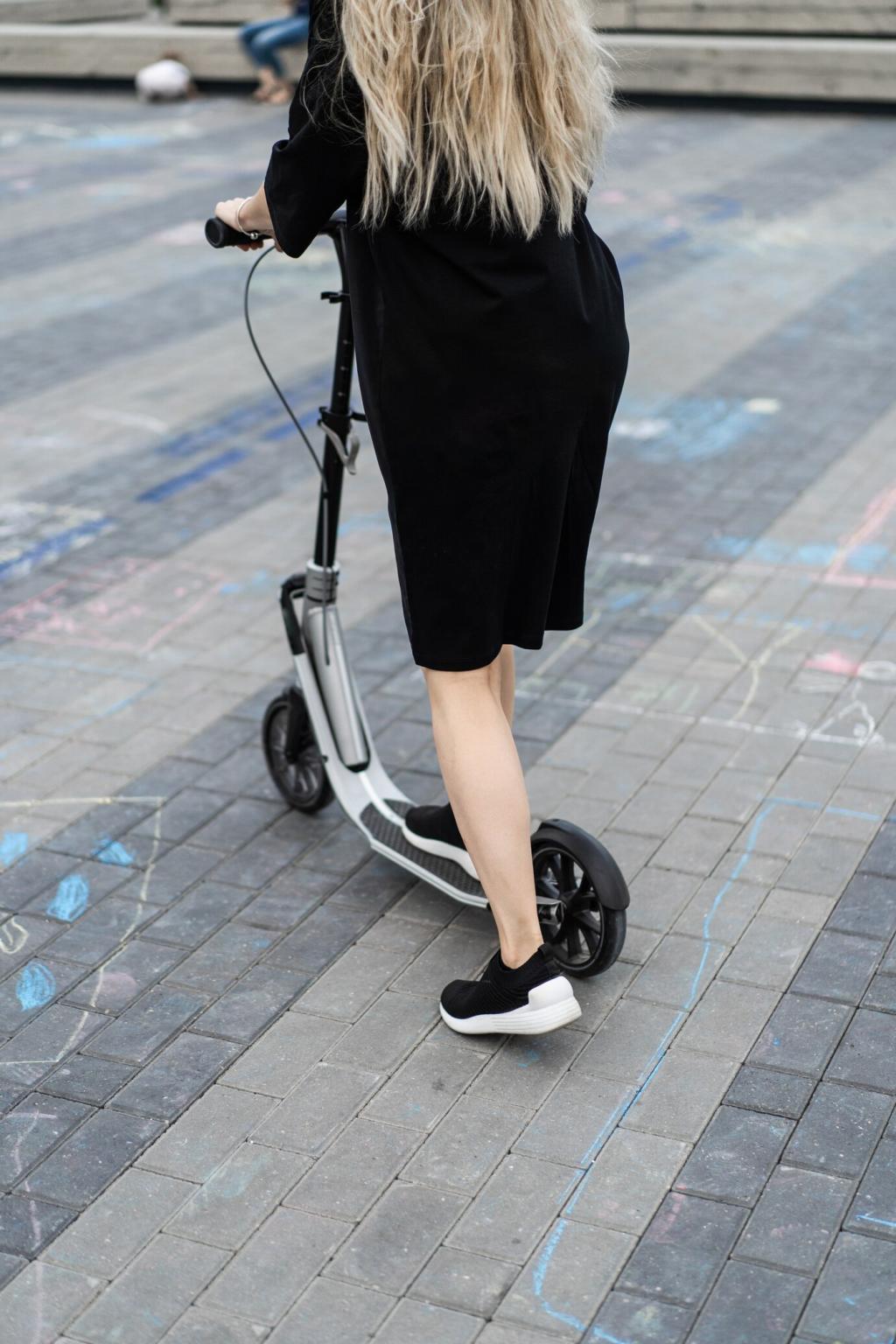Braking Systems Demystified
Disc brakes bite hard and shed heat quickly, ideal for hills and heavier riders. Drums are sealed and low-maintenance, great in wet grit. Electronic braking adds motor resistance with no pads to wear. Many scooters blend systems for balanced stopping, pairing mechanical control with electronics that smooth deceleration and reduce wheel lock.
Braking Systems Demystified
Regen converts momentum back into battery charge, extending range on rolling routes and gentle descents. It is strongest at higher speeds and fades near a standstill, so it complements—not replaces—mechanical brakes. Tuning adjustable regen levels can reduce hand fatigue on commutes while preserving brake pads for emergency stopping.










